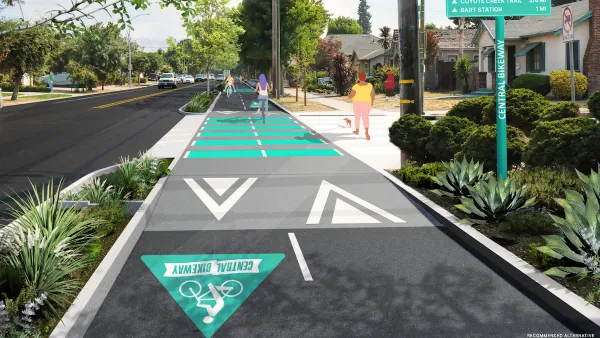With pandemic-era parklet regulations set to expire on June 30, the city is launching a new, permanent set of guidelines for outdoor dining and other uses of curbside space.

The city of Baltimore is enacting new, permanent guidelines for its Covid-era outdoor dining and parklets program, reports Amanda Yeager in the Baltimore Sun. “Baltimore’s decision to preserve restaurant parklets follows a public feedback period that started last fall, when the Department of Transportation issued a set of draft guidelines for the program. DOT officials say they received more than 2,000 comments on the proposed rules.”
Fees for parklets will be based on location, with costs ranging from $5 to $10 per square foot based on neighborhood equity scores. “Equity scores are based on census tract data, including the percentage of households with people of color within a community, as well as that area’s median income and the percentage of households that have access to a car.”
“The new policy creates fire safety rules for the outdoor dining structures — no open flames will be allowed, for instance — and also requires the parklets to be separated from the street by vertical blockades like concrete barriers or water-filled Jersey walls.” While restaurants have been the most eager adopters of parklets, other businesses are also eligible for the program. The new program takes effect July 1, one day after the temporary guidelines expire.
FULL STORY: Outdoor dining is here to stay: 5 things to know about Baltimore’s new policy for curbside parklets

Planetizen Federal Action Tracker
A weekly monitor of how Trump’s orders and actions are impacting planners and planning in America.

Silicon Valley ‘Bike Superhighway’ Awarded $14M State Grant
A Caltrans grant brings the 10-mile Central Bikeway project connecting Santa Clara and East San Jose closer to fruition.

Amtrak Cutting Jobs, Funding to High-Speed Rail
The agency plans to cut 10 percent of its workforce and has confirmed it will not fund new high-speed rail projects.

How a Truck Tax Could Save the Highway Trust Fund
The freight trucking industry is a prime candidate for a mileage tax that would boost road maintenance revenue.

Metro Data: LA Transit Ridership Fell Due to Immigration Raids
Metro ridership data reveal how the ICE raids sweeping Los Angeles are disrupting daily life and impacting how people move around the city.

Portland Transit Agency Announces Planned Service Cuts
TriMet says the state legislature’s failure to pass a bill that would have funded transit means it will have to make significant service cuts over the next several years.
Urban Design for Planners 1: Software Tools
This six-course series explores essential urban design concepts using open source software and equips planners with the tools they need to participate fully in the urban design process.
Planning for Universal Design
Learn the tools for implementing Universal Design in planning regulations.
Yukon Government
Caltrans
New Jersey Institute of Technology
Mpact (founded as Rail~Volution)
City of Camden Redevelopment Agency
City of Norman, Oklahoma
City of Portland
City of Laramie





























